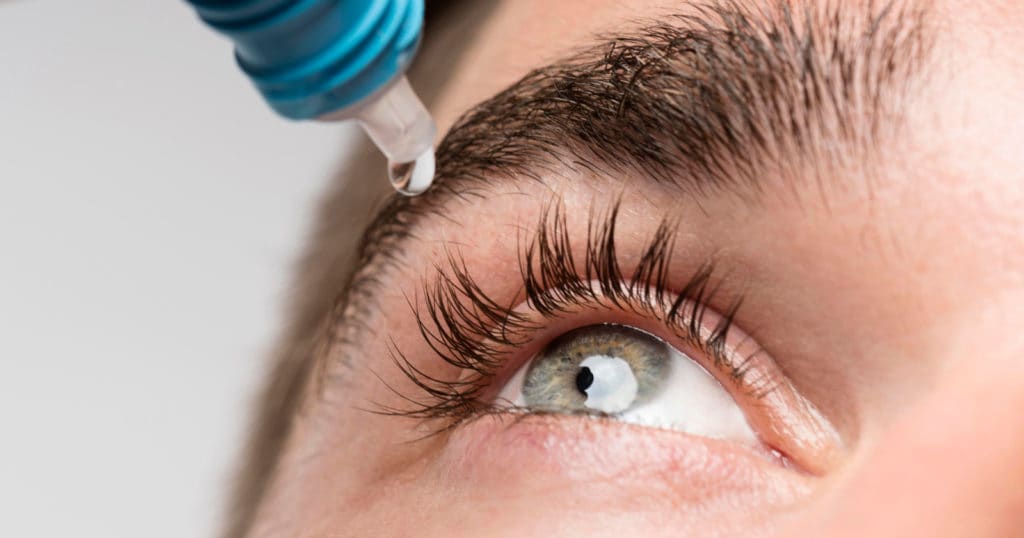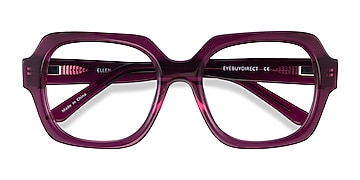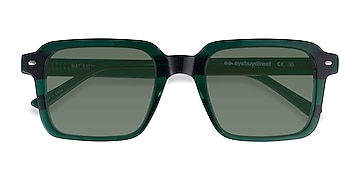Eye drops can help soothe eye allergies, relieve blurry vision from dry eyes, and treat some eye infections and diseases. However, they can’t do any of that if you don’t put them in your eyes the right way.

To get the full desired effect of your prescription or over-the-counter eye drops, follow these steps:
- Read the directions – If you have prescription eye drops, follow your eye doctor’s instructions about how many drops to put in and how often to use them, along with any other important information.
- Wash your hands – It’s a good idea to wash your hands and dry them with a clean towel before touching your face, eyes, or any eye medication.
- Take off your glasses or remove your contacts – If you wear contact lenses, you’ll probably need to remove them before you administer any eye drops. Only leave your contacts in if your eye doctor has told you to do so, or if your drops are labeled as safe for use with contacts.
- Open the medication – Shake the bottle first, then take off the cap. Be careful not to touch the tip because your fingers could contaminate it with bacteria.
- Get in position – Tilt your head back and look toward the ceiling or lie down. Focus on a spot away from the bottle and keep your eye wide open.
- Make an eye drop pocket – Before you use the drops, create a pocket between your lower eyelid and eyeball. Hold two fingers about an inch under your eye and pull down gently.
- Apply the drops – Hold the dropper about one inch above the pocket you created and gently squeeze the bottle so the prescribed number of drops lands in the pocket. Don’t touch your eye, eyelid, or eyelashes with the bottle. because this could transfer bacteria onto the dropper and into the medicine.
- Keep your eye closed – After you put the prescribed drop(s) in your eye, keep that eye closed. Gently press your finger on the tear duct at the inner corner of your eye next to your nose. Hold your finger there for 30 seconds to two minutes. This helps keep the medicine in your eye and gives it time to absorb.
- Don’t blink – Try to resist the urge to blink after applying your eye medication. If you do, some of the medicine may leak or drain out.
- Wait before applying more drops – If you need to use more than one type of eye drop for your eye condition, wait three to five minutes after applying the first drops before using the next kind.
- Wash your hands – It’s a good idea to wash your hands again to remove any medication that may have dripped onto your skin.
Repeat these steps if you need to put drops in your other eye too.
What to Do If You Can’t Get Drops into Your Eye
It’s normal to be anxious about putting anything in your eyes. If the steps above don’t work for you, here are a few other things that may help:
Try the Closed-Eyes Method
If you blink excessively or you need to administer eye drops to a child, you might benefit from the closed-eyes method:
- Lie down and close your eyes.
- Keep your eyes closed and squeeze the bottle so the eye drop lands in the inner corner of each eye next to your nose.
- To avoid contamination, do not let the bottle touch your eye.
- Open your eyes to allow the drop to enter your eye. If any excess leaks onto your face, wipe it off with a clean tissue.
- Close your eyes again and gently press on the inner corner of each eye for about two minutes.
Use an Eye Drop Dispenser
An eye drop dispenser (also called an eye drop aid) is a device that helps you administer eye drops properly. In most cases, you attach the device to the eye drop bottle. You can then use the device to position the bottle tip over your eye so the drop goes where it’s supposed to.
Some devices are designed to make administering eye drops easier for patients who have shaky hands or a weak grip.
Studies have found that people who use an eye drop aid are more successful when putting in eye drops than when using the bottle alone. Eye drop devices also help prevent contamination of the bottle tip.
There is a wide variety of eye drop devices that you can buy over the counter. Talk to your eye doctor if you’re not sure what will work best for you.
Eye Drops Do’s and Don’ts
To help make sure you use your eye medication safely and effectively, consider the following do’s and don’ts:
Do:
- Wash your hands before and after using eye medication.
- Remove your contact lenses.
- Keep your eye closed after administering your eye drops for up to two minutes. Gently press on your eyelid to ensure the drop stays in your eye.
Don’t:
- Don’t touch the dropper with your hands or let it touch your eye or eyelid. This can get bacteria on the bottle and into the drops.
- Don’t blink after applying your eye medication. Blinking can cause your eye to drain the drops away.
- Don’t apply more than one type of eye drop at a time. If you use multiple drops, wait at least three to five minutes between each type to avoid mixing the drops together.
- Don’t add extra drops. If you’re sure the prescribed number of drops made it into your eye, that should be enough.
Using eye drops can be hard, but you’ll get better with practice. Talk to your eye doctor if you have any problems, questions, or concerns about eye health, vision, or eye drops.
SOURCES
- How to put in eye drops. EyeSmart. American Academy of Ophthalmology. May 2023.
- Video: How to put in eye drops. All About Vision. October 2019.
- 10 tips for using glaucoma eye drops. BrightFocus Foundation. January 2023.
- Tips to make eye drops easier for kids — and parents. Children’s Hospital of Orange County (CHOC). December 2022.
- 9 essential eye drop dos and don’ts. Better Vision Guide. Accessed August 2023.
- New device invented by VA nurse makes using eyedrops easier. VA News. U.S. Department of Veterans Affairs. March 2022.
- Comparison of the usability of eye drop aids and the conventional bottle. Journal of Clinical Medicine. December 2021.
- How to put in eye drops. National Eye Institute. July 2021.








